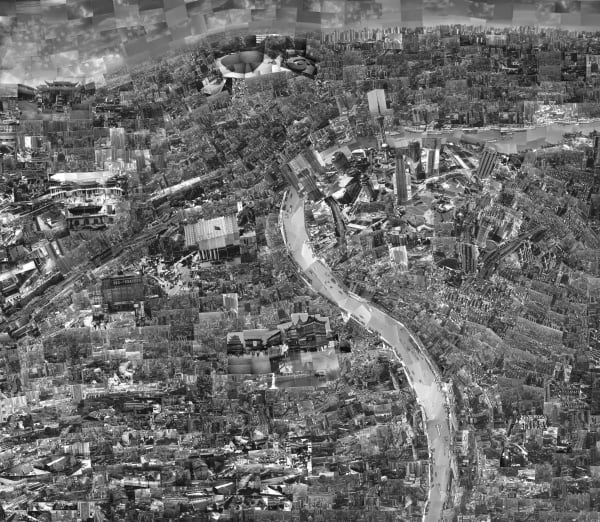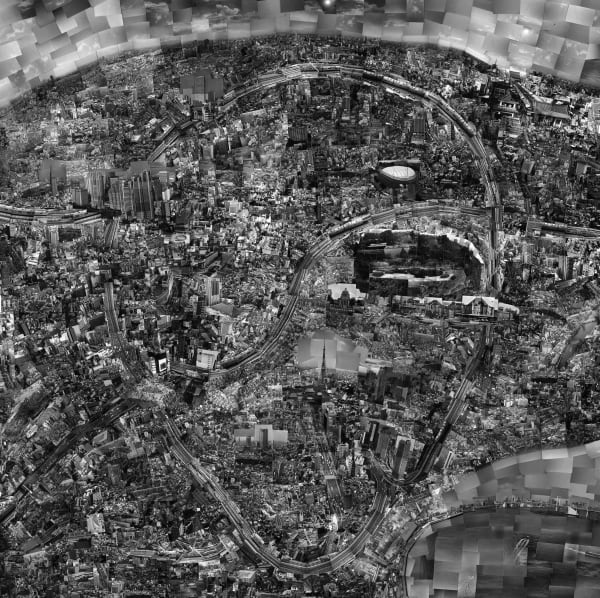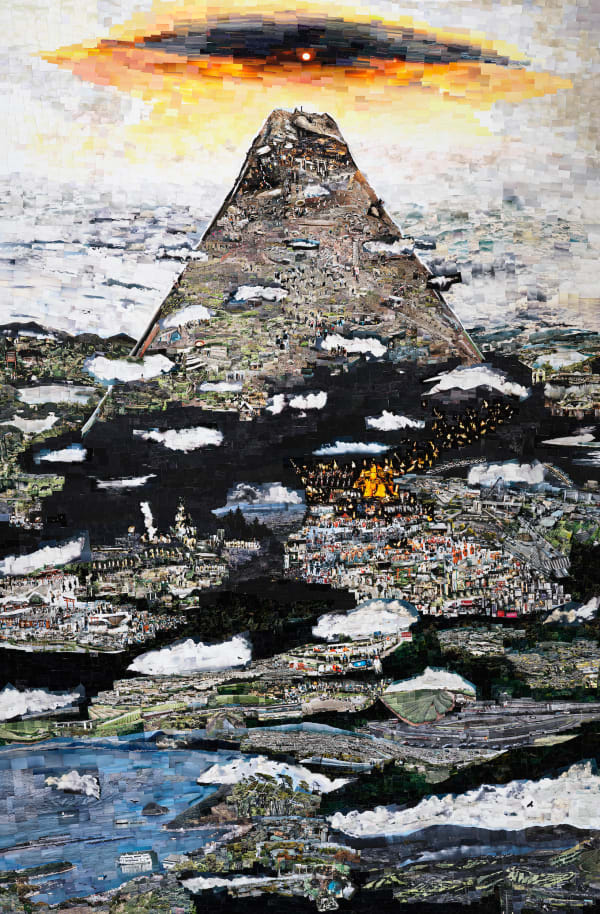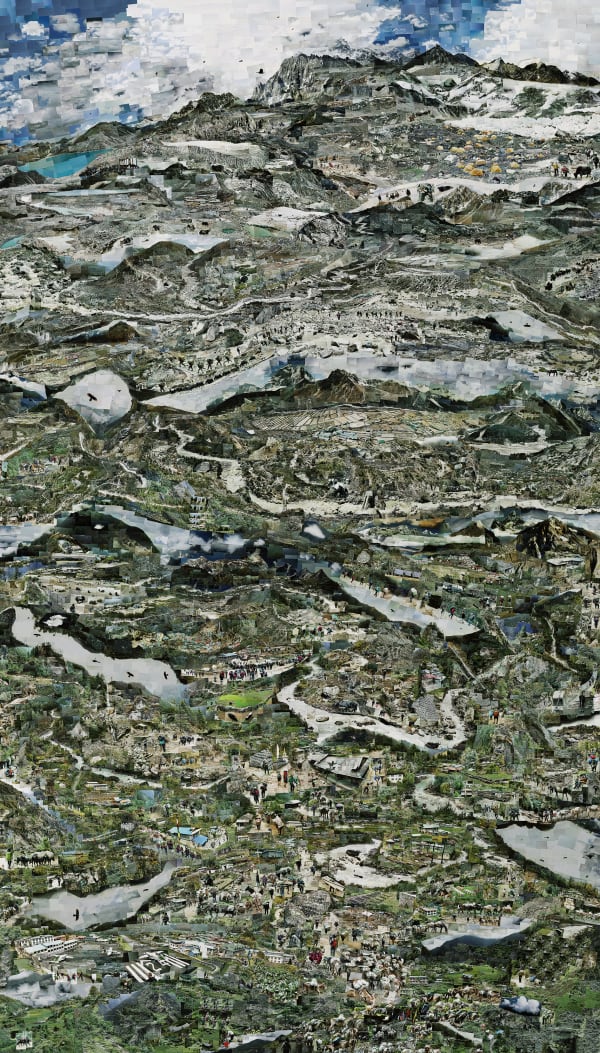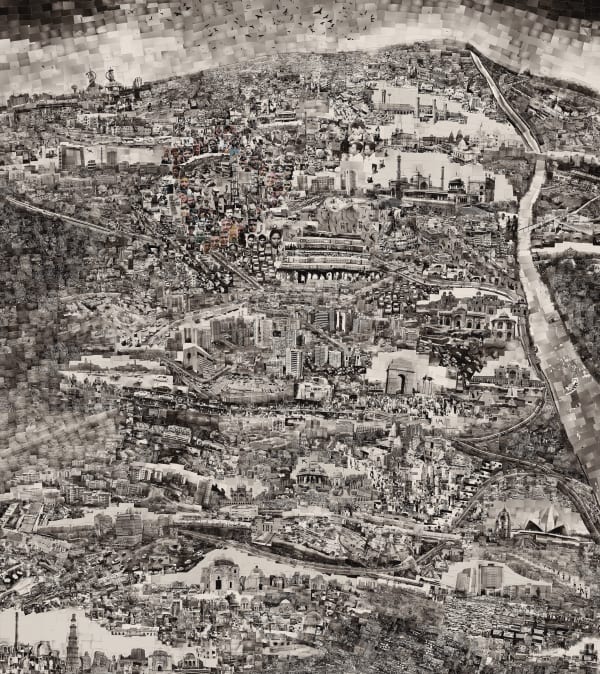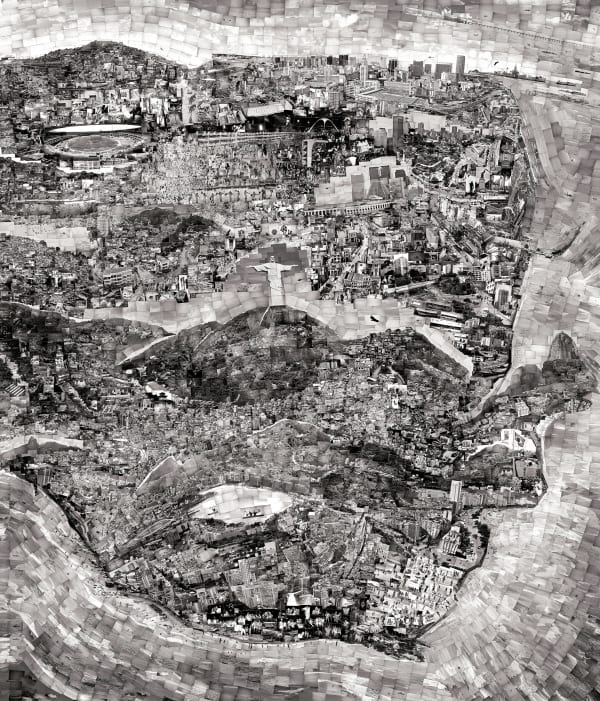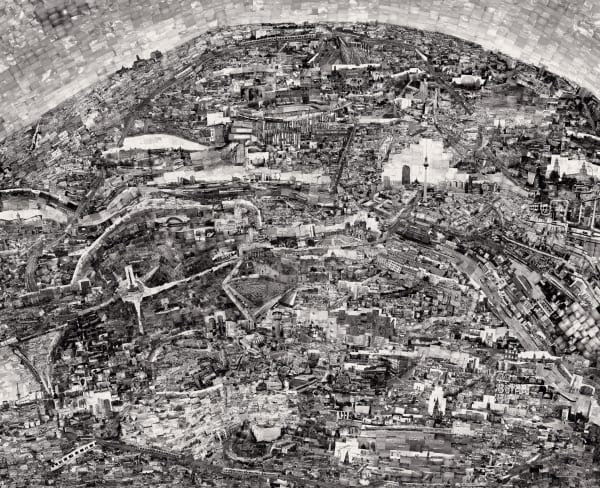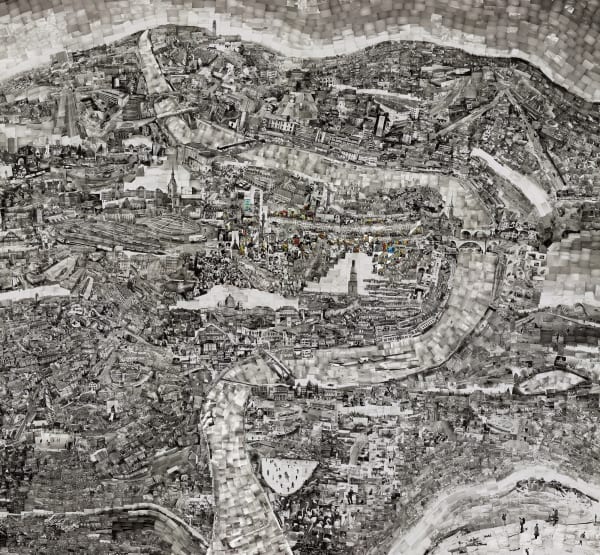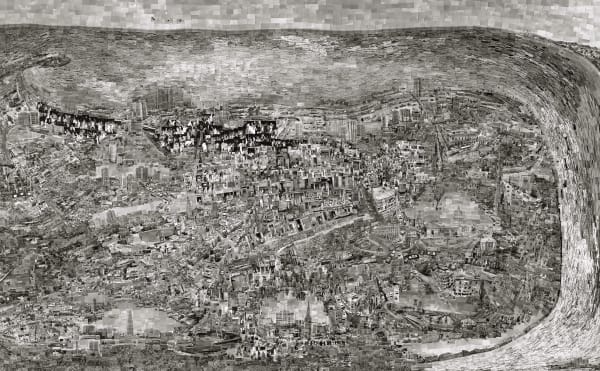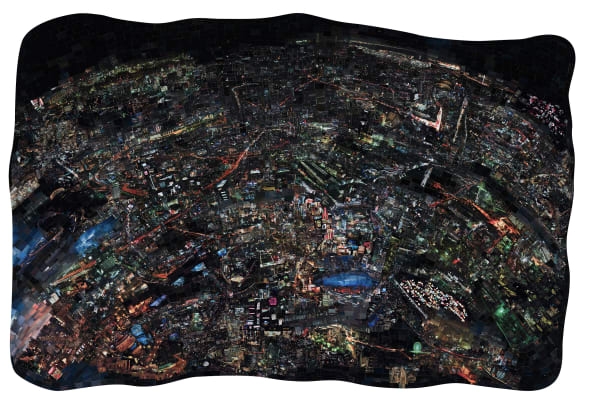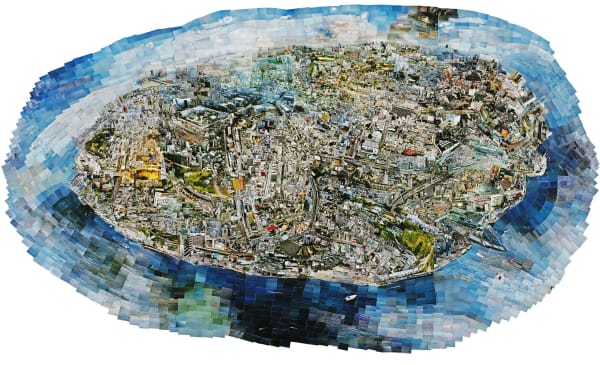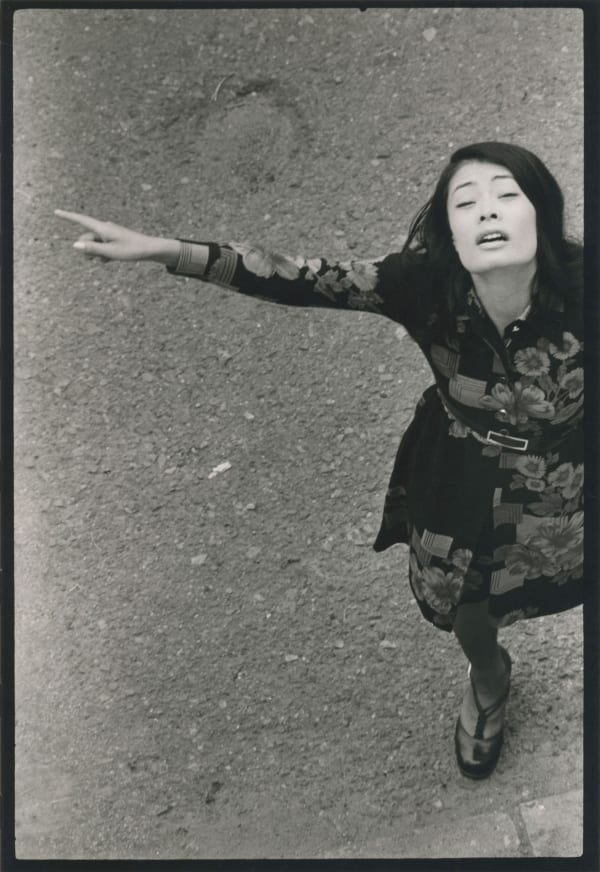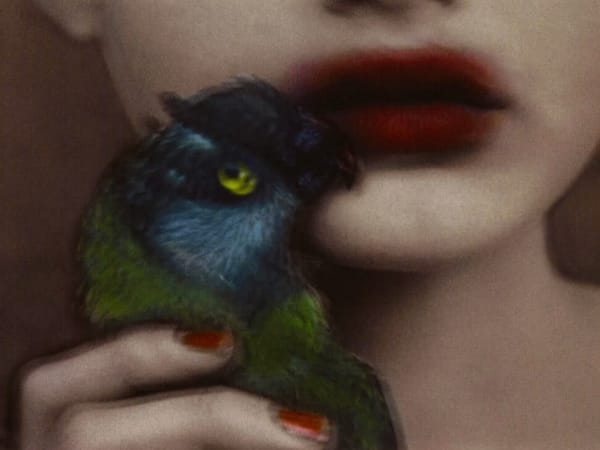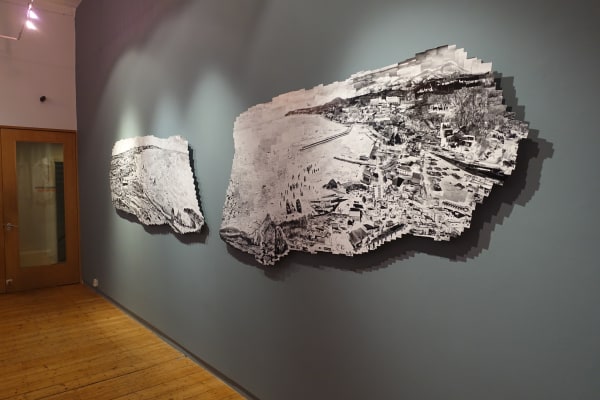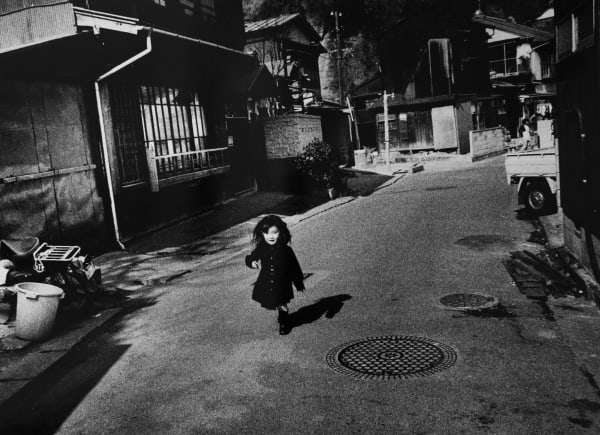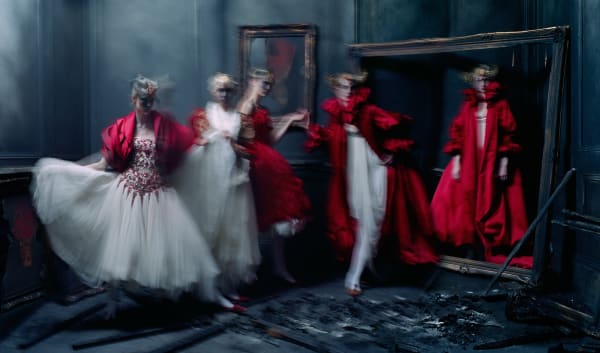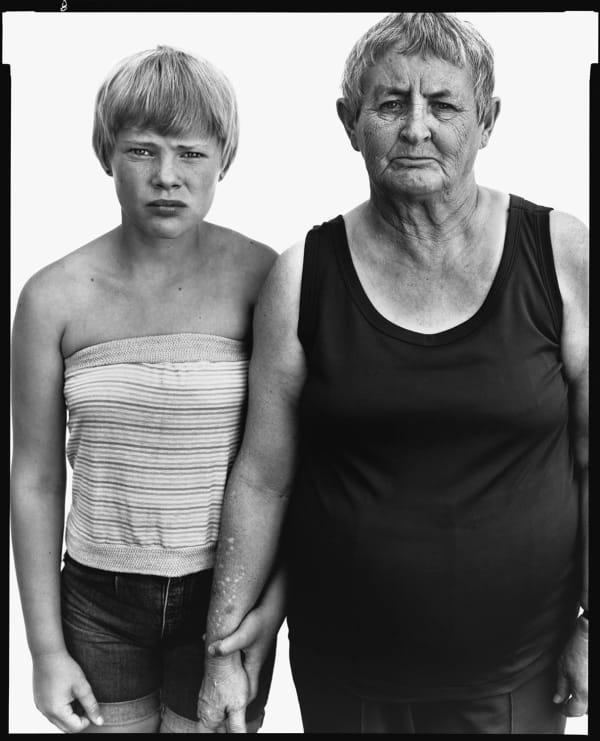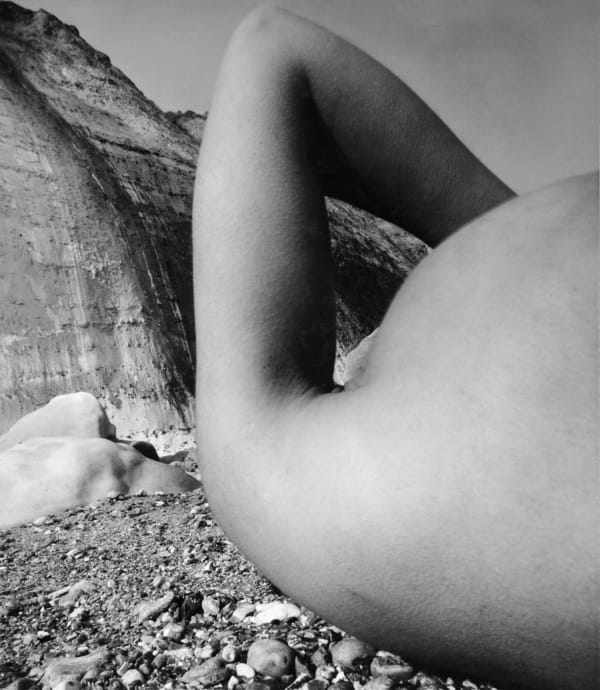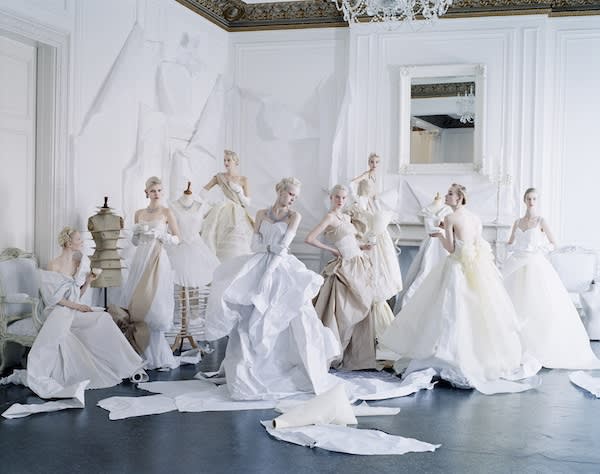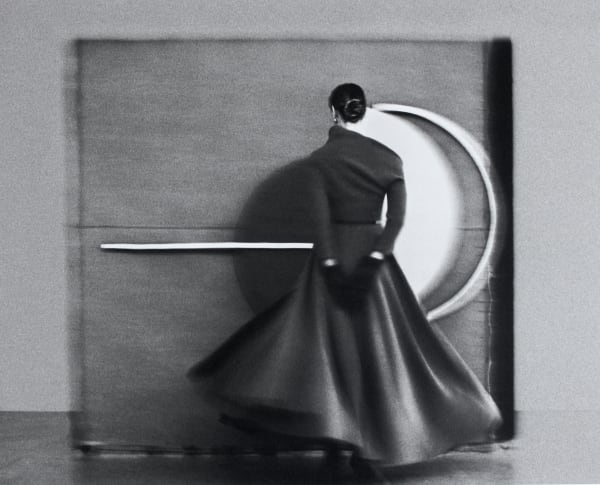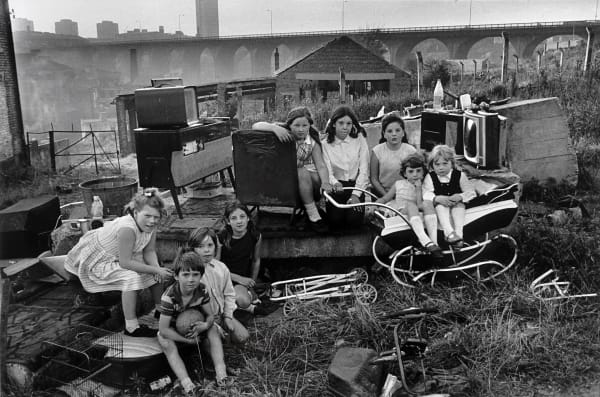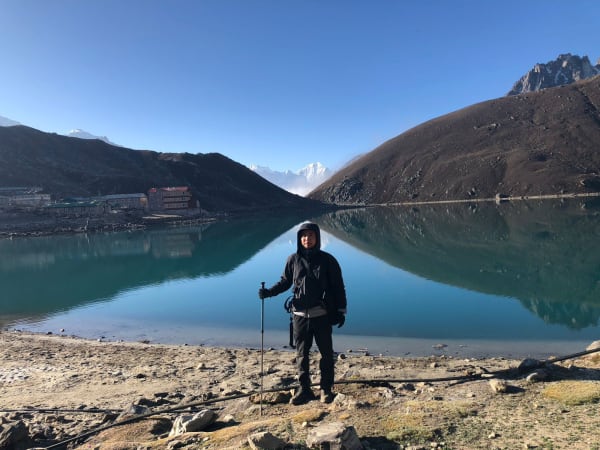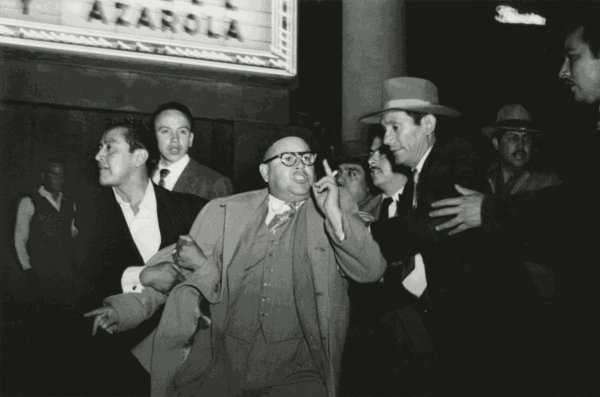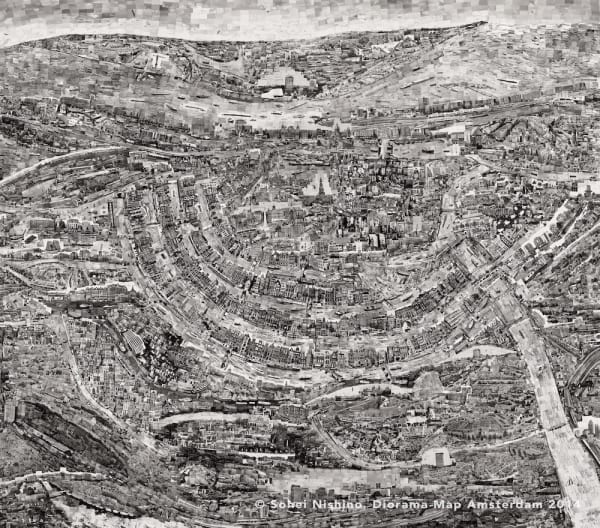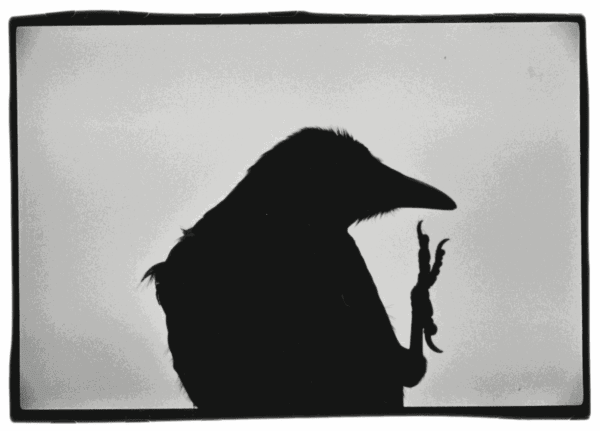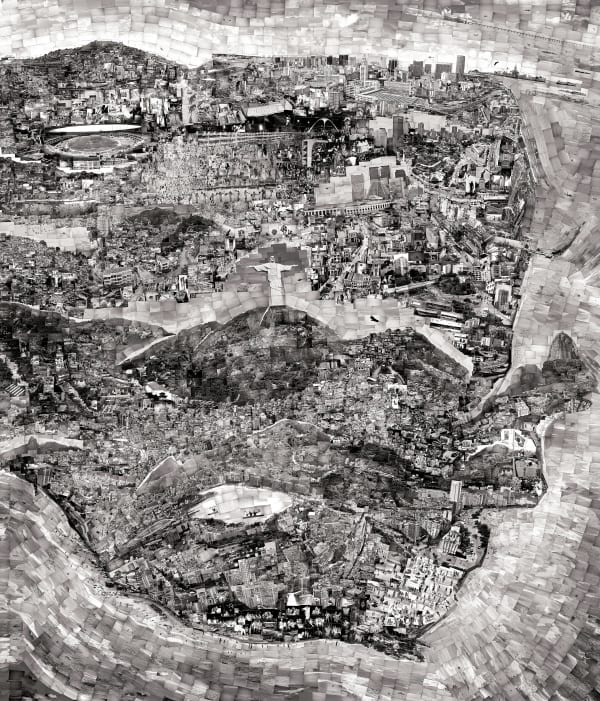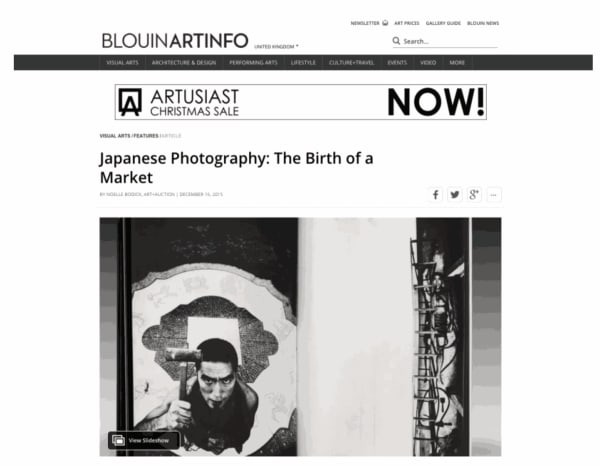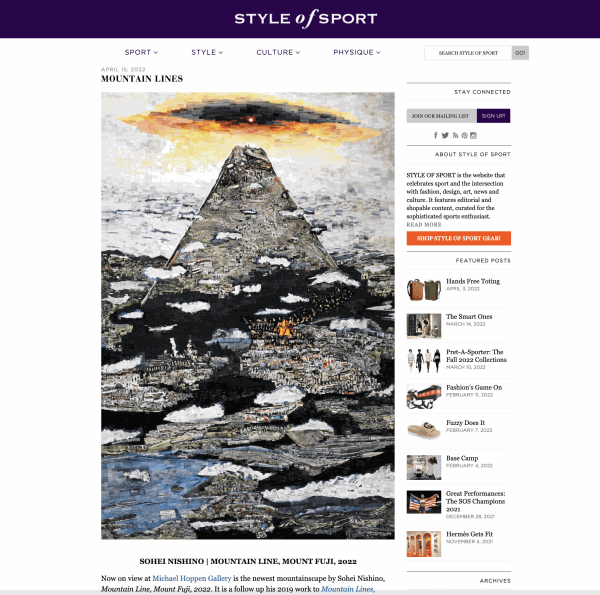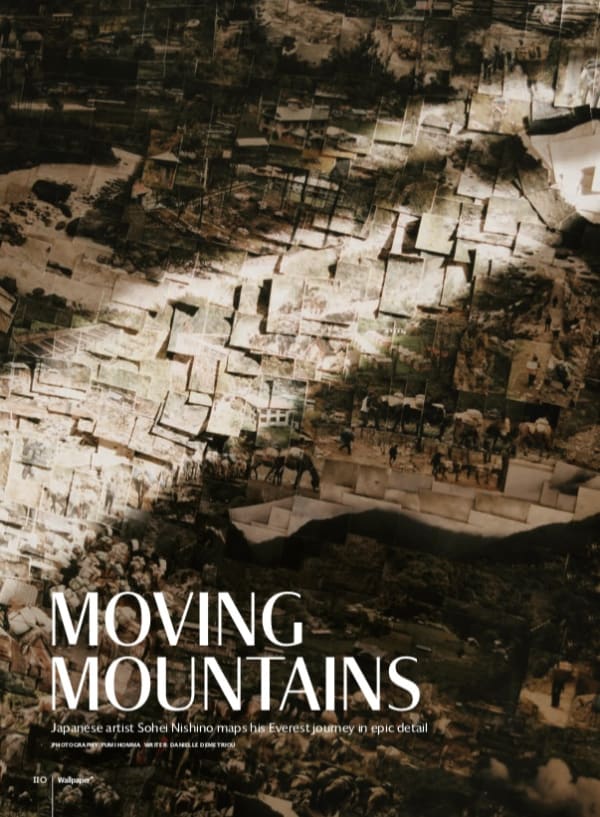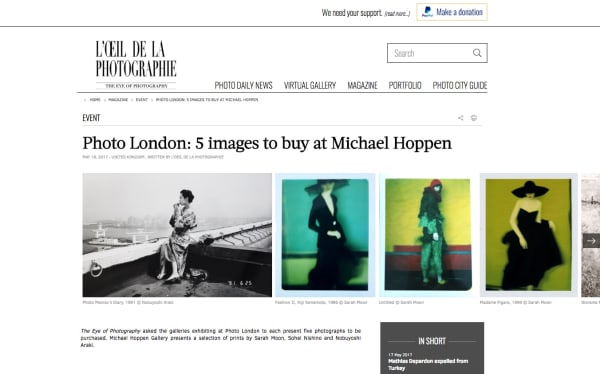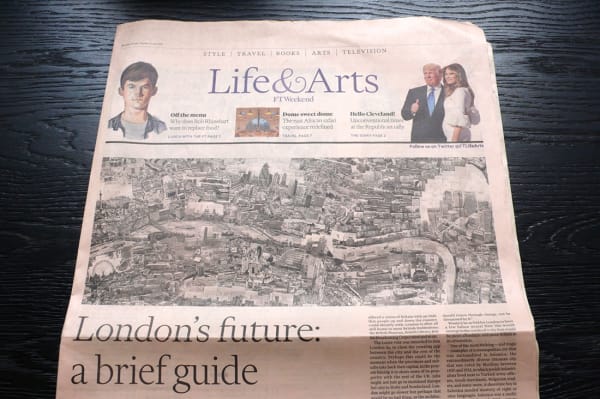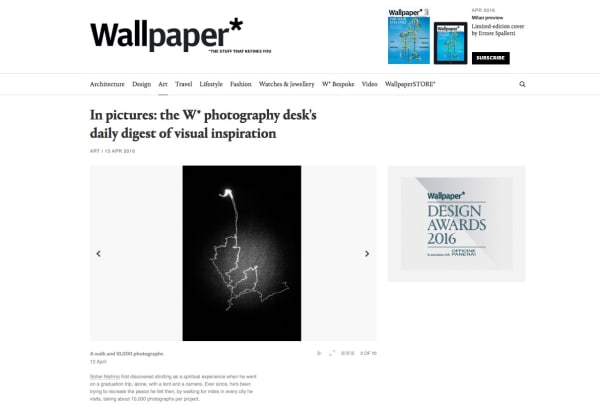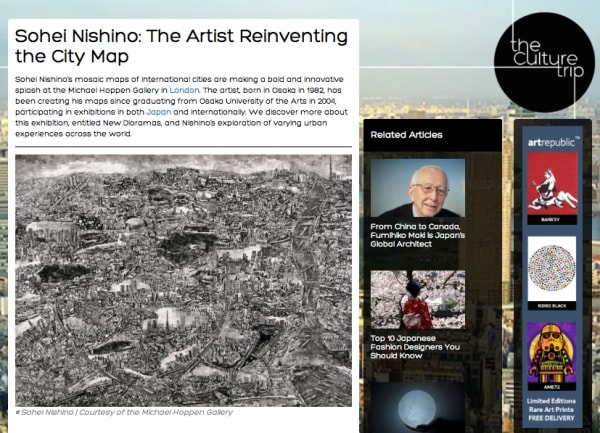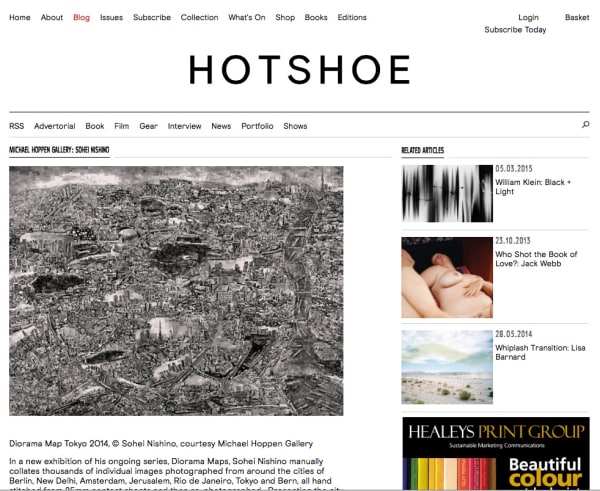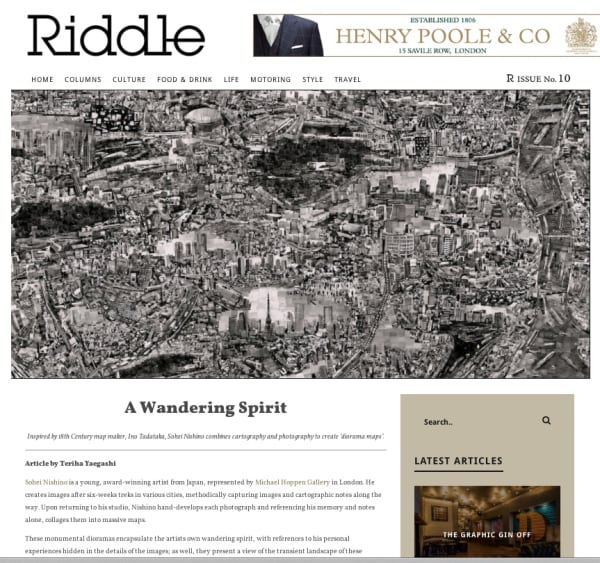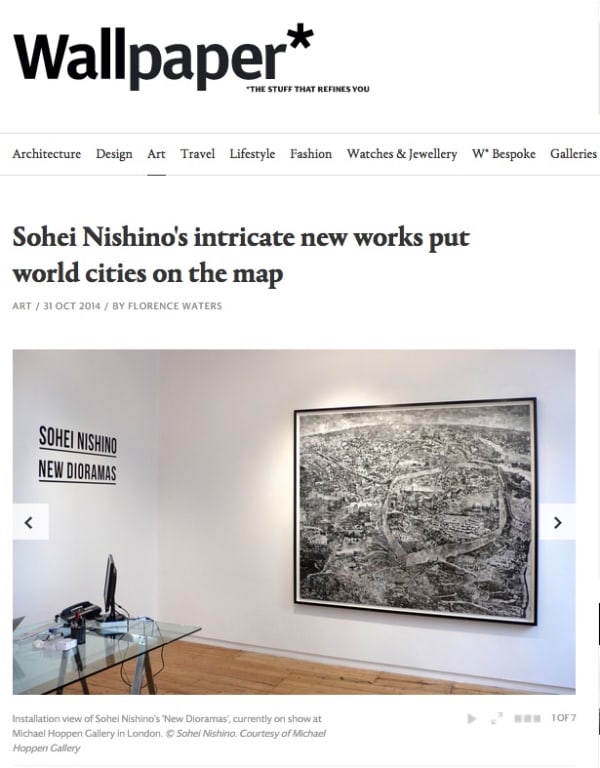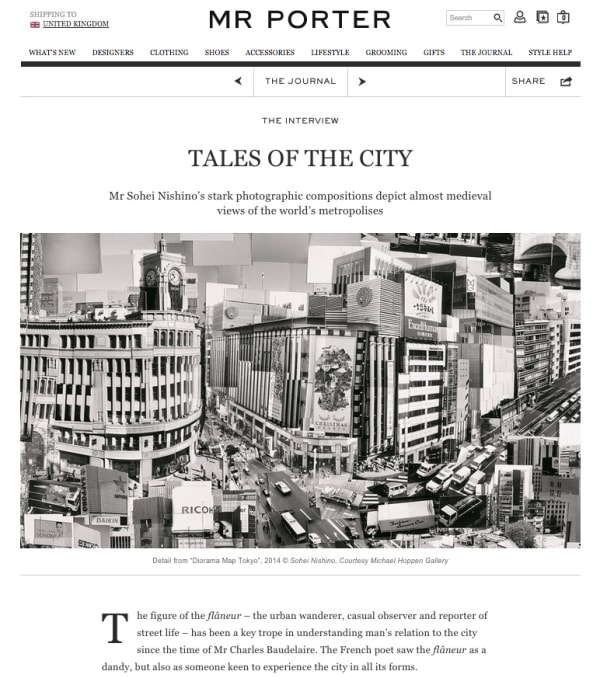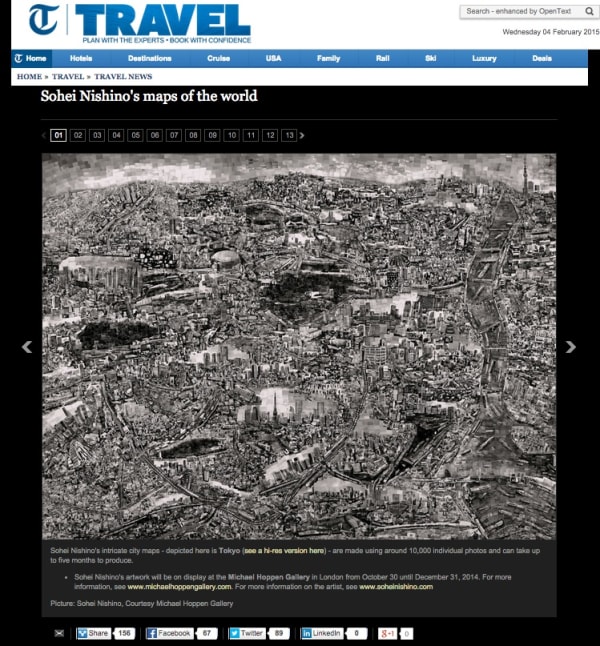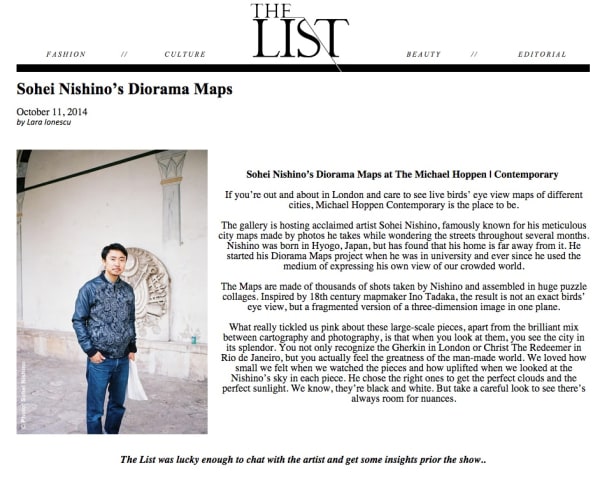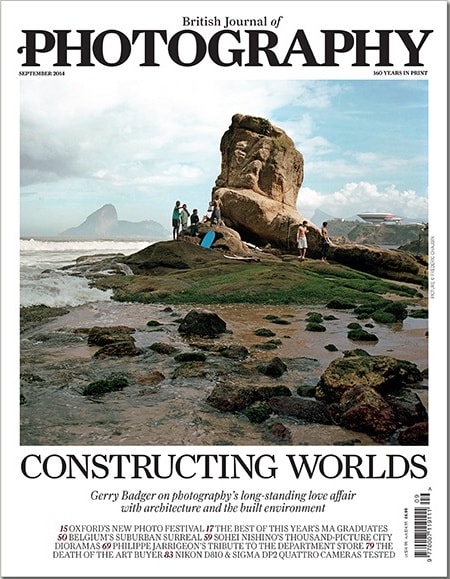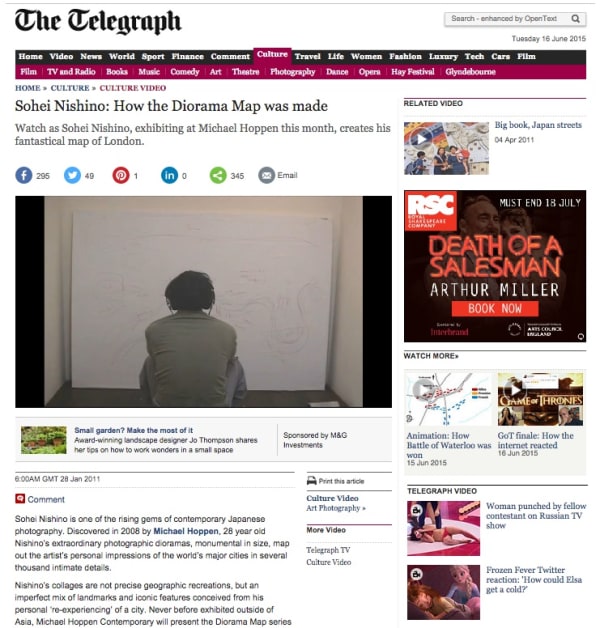-
 Diorama Map Hiroshima, 2003
Diorama Map Hiroshima, 2003 -
 Diorama Map Hong Kong, 2010
Diorama Map Hong Kong, 2010 -
 Diorama Map Shanghai 2010
Diorama Map Shanghai 2010 -
 Diorama Map Tokyo, 2004
Diorama Map Tokyo, 2004 -
 Mountain Line, Fuji, 2022
Mountain Line, Fuji, 2022 -
 Mountain Line, Everest , 2019
Mountain Line, Everest , 2019 -
 Diorama Map New Delhi, 2013
Diorama Map New Delhi, 2013 -
 Diorama Map Rio de Janeiro, 2011
Diorama Map Rio de Janeiro, 2011 -
 Diorama Map Po River, Italy, 2018
Diorama Map Po River, Italy, 2018 -
 Diorama Map Berlin, 2012
Diorama Map Berlin, 2012 -
 Diorama Map Bern, 2012
Diorama Map Bern, 2012 -
 Diorama Map Havana, 2016
Diorama Map Havana, 2016 -
 Diorama Map Night, 2010
Diorama Map Night, 2010 -
 Diorama Map i-land, 2010
Diorama Map i-land, 2010
In making his Diorama maps, Sohei Nishino combines photography, collage, cartography and psychogeography to create large prints of urban landscapes. Drawing inspiration from the 18th century Japanese mapmaker, Inō Tadataka, his prints re-imagine the cities he has visited. To build his Diorama maps, Nishino walks a city's streets for an average of three months, exploring many vantage points and gathering hundreds of rolls of exposed film. He then painstakingly prints the photographs by hand and compiles them to form the tableaux he will use as the basis for his limited edition photographs.
The overall effect is not a traditional bird's-eye view but an enlightened way of seeing three dimensions in one plane. Although geographical accuracy is important in this process, scales are altered and locations occasionally repeated, mimicking our own fluid memories of place and time. From a distance the maps are almost abstract, it is not until we examine them in detail that the full diorama unfolds - the theatre of one man's city played out in miniature.
-

PARIS PHOTO 2023
GRAND PALAIS ÉPHÉMÈRE 9 - 12 Nov 2023Michael Hoppen Gallery is delighted to share a preview of our Paris Photo presentation. The fair opens at the Grand Palais Éphémère in the grounds of the Champ-de-Mars on Wednesday...Read more -

Masterpiece London 2022
The Royal Hospital Chelsea • Stand 611 30 Jun - 6 Jul 2022We are delighted to be participating in Masterpiece London 2022 and will be presenting a selection of contemporary works, some of which have never been shown before, alongside important historic...Read more -

Sohei Nishino | Mountain Line, Fuji, 2022
Online Exclusive 6 Apr - 31 May 2022Michael Hoppen Gallery is delighted to present an exclusive online exhibition of Sohei Nishino's latest work Moutain Line, Fuji.Read more -

PHOTO LONDON 2021
Somerset House • STAND C1 8 - 12 Sep 2021Dear Friends, We are very excited to be exhibiting at Photo London again, opening at Somerset House on Wednesday 8 September. You will find us at stand C1 on the...Read more -

PARIS PHOTO NEW YORK 2020
ONLINE FAIR 2 - 5 Apr 2020Read more -

Sohei Nishino | New Works
Gallery exhibition 12 Mar - 28 Aug 2020A show presenting new work by Sohei Nishino.Read more -

SOHEI NISHINO | Day Drawings
ONLINE EXHIBITION 6 Feb - 25 Apr 2020Prints from the 'Day Drawing' series by Sohei Nishino are available to buy through the enquiry formsRead more -

Shashin: are-bure-boke
14 Sep - 16 Nov 2018An exhibition of Japanese photographic mastersRead more -

Art Genève 2018
Palexpo • BOOTH D44 1 - 4 Feb 2018A preview of the Michael Hoppen Gallery booth for Art Geneva, 2018Read more -

PARIS PHOTO 2017
Grand Palais • Booth C10 9 - 12 Nov 2017Michael Hoppen Gallery will be at Paris Photo, 2017, booth C10.Read more -

AIPAD 2017
Booth 512 30 Mar - 2 Apr 2017An assortment of works from the collection that MHG will be taking to this years Aipad art fair in New York.Read more -

New Contemporary
Group Exhibition 7 - 28 Feb 2017A group exhibition of new contemporary photography that Michael Hoppen Gallery now offersRead more -

PHOTO LONDON 2016
SOMERSET HOUSE • STAND B8 19 - 22 May 2016Michael Hoppen Gallery returns to Photo London with a wide selection of works including a mighty collection of Hungarian works.Read more -

ZONA MACO 2016
Art Fair, Mexico 3 - 7 Feb 2016A preview of the works that Michael Hoppen Gallery will be bringing to Zona Maco, Mexico.Read more -

Paris Photo 2014
Grand Palais 13 - 16 Nov 2014Paris, photo, fair, art, artists, Eamonn Doyle, Foglia, Walker, Tim, 2014Read more -

Sohei Nishino
The Diorama Map Series 24 Feb - 21 Apr 2011City, maps, world, diorama, photograph, collageRead more
-

Spring Newsletter 2023
February 9, 2023ARTIST NEWS, EVENTS AND EXHIBITIONS TIM WALKER Solo exhibition: Wonderful Things Journey into the fantastical worlds created by internationally acclaimed fashion photographer Tim Walker....Read more -

Sohei Nishino Solo Exhibition | Walk With Me
Kanaz Forest of Creation January 28, 2023We are proud that Sohei Nishino has been selected for a solo exhibition at Kanaz Forest of Creation, for the 25th edition of their museum...Read more -

Sohei Nishino | WALK! at Schirn Kunsthalle Frankfurt
A major survey exhibition dedicated to the act of walking in contemporary art production February 18, 2022The act of walking as a social phenomenon has gained renewed importance in the twenty-first century. The group exhibition WALK! at the SCHIRN provides an...Read more -

Spring Newsletter 2022
Early Spring at Michael Hoppen Gallery February 8, 2022spring 2022 newsletter for upcoming exhibitions, artist news and upcoming art fairs at the Michael Hoppen GalleryRead more -

TOKYO: ART & PHOTOGRAPHY
Ashmolean Museum August 31, 2021This exhibition is a celebration of one of the world’s most creative, dynamic and thrilling cities. Explore Japan’s capital city through the vibrant arts it...Read more -

Paris Photo New York 2020
Michael Hoppen's Highlights May 1, 2020Dear Friends, This week we present you with our fourth Viewing Room, to close the month of April and round up our Paris Photo New...Read more -

Winter Newsletter '19
Artist news & a look ahead to next years' programme of art fairs & exhibitions December 2, 2019A look ahead to the 2020 programmeRead more -

Summer Newsletter '18
A review of the past few months at Michael Hoppen Gallery June 28, 2018The Michael Hoppen Gallery Summer newsletter 2018Read more -

SOHEI NISHINO
JOINT WINNER OF THIS YEAR'S MAST FOUNDATION PHOTOGRAPHY GRANT February 6, 2018Sohei Nishino wins Mast Foundation award, 2018Read more -

SOHEI NISHINO
Prix Pictet exhibition at The V&A, London May 8, 2017Sohei Nishino shortlisted for Prix Pictet award and exhibited at V&A museum, London.Read more -

NEWSLETTER WINTER '17
Michael looks ahead to another exciting year for Michael Hoppen Gallery January 24, 2017The Michael Hoppen Gallery Winter newsletter, looking ahead to another exciting year for the gallery.Read more -

SOHEI NISHINO
NEW DIORAMA MAP RELEASED October 27, 2016New Diorama Map by Sohei Nishino released of San FranciscoRead more -

Contemporary Japanese Photography Seminar
DAIWA Anglo-Japanese Foundation May 3, 2016Michael Hoppen and Simon Baker discuss the photographic creativity and innovation emerging from contemporary Japanese photo artists.Read more -

SOHEI NISHINO
Day Drawing - Behind the scenes April 20, 2016Here photographer Sohei Nishino reveals how he makes these beautiful 'Day Drawings'...Read more -

MHG Newsletter '16
Michael looks ahead to an exciting year for the gallery February 23, 2016The Michael Hoppen Gallery newsletter summarises the year ahead for the galleryRead more -

SOHEI NISHINO
Zona Maco: Featured Artist February 3, 2016Sohei Nishino's Diorama Map Rio de Janeiro will be shown at this years Zona Maco art Fair in MexicoRead more -

Japanese Photography: The Birth of a Market
Michael Hoppen talks to Blouin Art Info December 16, 2015Michael Hoppen talks to press about the Japanese photography and our long term partnership with many of the greatest post-war photographers.Read more
-

Sohei Nishino | Mountain Lines, Mount Fuji, 2022
Style of Sport, April 15, 2022 -

Thousands of Photographs of the Sea, in One Image
Jon Mooallem, The New York Times Magazine, October 6, 2021 -

Wallpaper* - Moving Mountains
Author: Danielle Demetriou. Photography © Fumi Homma, Wallpaper*, February 12, 2020 -

MAST Foundation for Photography Grant 2018
CULT FRAME, February 6, 2018 -

Photo London: 5 images to buy at Michael Hoppen
L'OEIL DE LA PHOTOGRAPHIE, May 18, 2017 -

Cartophilia, in Two Exhibits at SFMOMA
Jonathan Curiel, SF Weekly, January 28, 2017 -

NEW WORK: SOHEI NISHINO AT THE SAN FRANCISCO MUSEUM OF MODERN ART
Glen Helfand, Photograph, December 23, 2016 -

CRITIC's PICKS: Sohei Nishino
Kim Beil, ART FORUM, December 22, 2016 -

Two Gorgeous Postwar to Present Day Japanese Photography Exhibits On View at SFMOMA
SF Station online, November 15, 2016 -

12 Photographers Selected as Finalists for Prix Pictet
Bianca Silva, TIME LIGHTBOX, November 10, 2016 -

Cities like you've never seen them before: A Japanese artist's giant 'Diorama Maps'
Liesl Bradner, LA Times, November 6, 2016 -

The Sum of 10,000 Parts
Lauren Murrow, Modern luxury San Francisco online, November 1, 2016 -

These Surreal City Maps Are En Route to SFMOMA
Ian A. Stewart , Modern Luxury San Francisco online, September 9, 2016 -

Sohei Nishino: Cover image for FT Weekend
FT Weekend, print, July 24, 2016 -

In pictures: the W* photography desk's daily digest of visual inspiration
Paula Erizanu, Wallpaper*, April 13, 2016 -

Saatchi gallery: SELECTED WORKS BY SOHEI NISHINO
William A Ewing, Saatchi Gallery -

Sohei Nishino: The Artist Reinventing the City Map
Jillian Levick, The Culture Trip, December 14, 2014 -

MICHAEL HOPPEN GALLERY: SOHEI NISHINO
Alan Knox, Hotshoe International Online, November 26, 2014 -

Wandering Spirit
Riddle Magazine, November 24, 2014 -

'Sohei Nishino's intricate new works put world cities on the map'
Florence Waters, Wallpaper* magazine, October 31, 2014 -

'Tales of the City'
Mr CB Liddell, Mr Porter, October 30, 2014 -

"Sohei Nishino's maps of the world"
The Telegraph, October 28, 2014 -

Sohei Nishino
TimeOut, October 27, 2014 -

Sohei Nishino's Diorama Maps
Lara Ionescu, The List, October 11, 2014 -

Sohei Nishino: Constructing worlds
Simon Bainbridge, BJP #7828, September 24, 2014 -

Sohei Nishino: How the Diorama Map was made
The Telegraph, January 28, 2011


